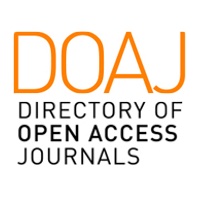SHORT-TERM OBSERVATION ON MARINE DEBRIS AT COASTAL AREAS OF TAKALAR DISTRICT AND MAKASSAR CITY, SOUTH SULAWESI-INDONESIA
DOI:
https://doi.org/10.20956/jiks.v4i2.7061Keywords:
Marine debris, plastics, macro-debris, South SulawesiAbstract
Marine debris is defined as material that is solid, persistent, manufactured or processed, and deliberately or not-deliberately left in the marine environment. Marine debris comes in many shapes and forms, ranging in size from microscopic microplastics to large vessels. Marine debris is a big and growing global problem, pose threats to marine life sustainability. Plastic is a major component of marine debris, and single-use packaging accounts for an increasing part of the global marine debris load. Research on marine debris was conducted on coastal areas and Small Island of South Sulawesi destined for local tourism, i.e., Karama beach, Bodia beach and Mandi beach (Galesong, Takalar District), Tanjung Bayang beach, Akkarena beach and Lae-lae island/also known as Bob beach (Makassar City). This research was aimed at identifying marine debris according to its types, size, and mass. Debris was collected in a 25 x 60 m transect with direction 30 m towards land and waters, respectively, with 3 replication transects at every location, whilst collections of debris were conducted during low and high tides. Current (direction and speed) and waves (incoming direction and height) were also measured as supporting parameters. Surrounding sampling location characteristics were also recorded. The result showed that Karama beach is found with highest total marine debris mass in Takalar (36.44 kg), whilst in Makassar, the Lae-lae island was found to be the highest with debris mass (43.22 kg). Plastic was predominant debris at all sampling locations with percentages of 62.7 – 86.6%. Lastly, the predominant size was macro-debris (25-100 cm).
References
Bahar, A., 2015. Pedoman Survei Laut. Masagena Press. Makassar. 87 p.
Brunner, K. 2014. Effect of Wind and Wave-Driven Mixing on Subsurface Plastic Marine Debris Concentration. Thesis. University of Delaware. 132 p.
CBD, 2012. Secretariat of the Convention on Biological Diversity and the Scientific and Technical Advisory Panel—GEF, 2012. Impacts of Marine Debris on Biodiversity: Current Status and Potential Solutions, Montreal, Technical Series No. 67, 61 p.
Gall, S. & Thompson, R., 2015. The Impact of Debris on Marine Life. Marine Pollution Bulletin, 92 (1-2): 170-179.
Hastuti A.R. 2014. Distribusi Spasial Sampah Laut di Ekosistem Mangrove Pantai Indah Kapuk Jakarta. Departemen Manajemen Sumber Daya Perairan. IPB. Bogor. 67 p.
Jambeck R., J., Roland G., Chris W., Theodore R., S., Miriam P., Anthony A., Ramani N., and Kara L. 2015. Plastic Waste Inputs from Land into the Ocean. Science 347: 768-771.
Lippiatt, S., Opfer, S., and Arthur, C., 2013. Marine Debris and Monitoring Assesment. NOAA. 88 p.
NOAA [National Oceanic and Atmospheric Administration]. 2013. Programmatic Environmental Assessment (PEA) for the NOAA Marine Debris Program (MDP). Maryland (US): NOAA. 168 p.
NOAA. 2016. Marine Debris Impacts on Coastal and Benthic Habitats.
NOAA Marine Debris Habitat Report. 31 p.
Downloads
Published
Issue
Section
License

This work is licensed under a Creative Commons Attribution 4.0 International License













